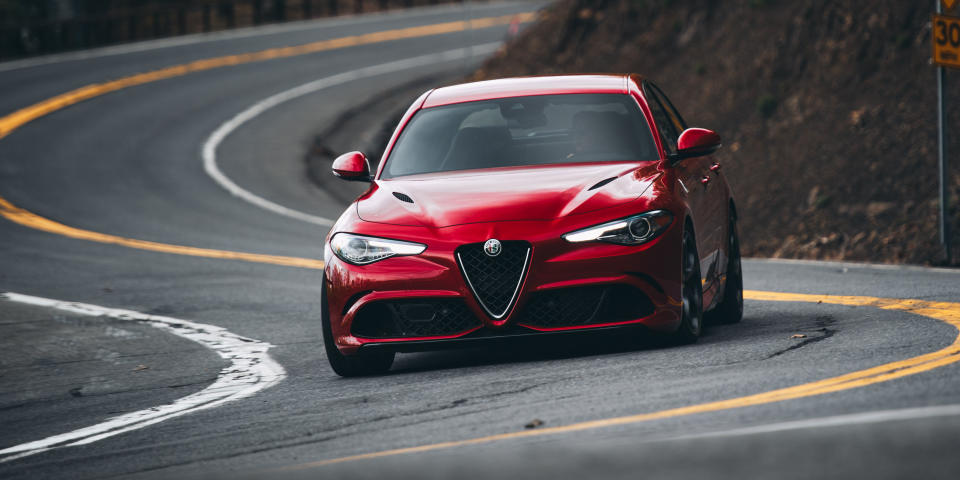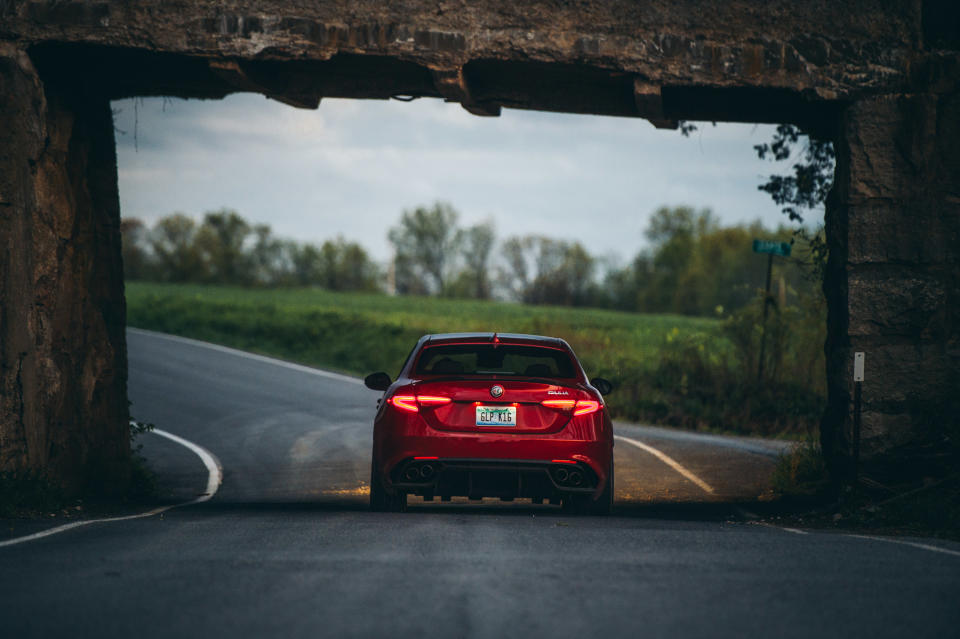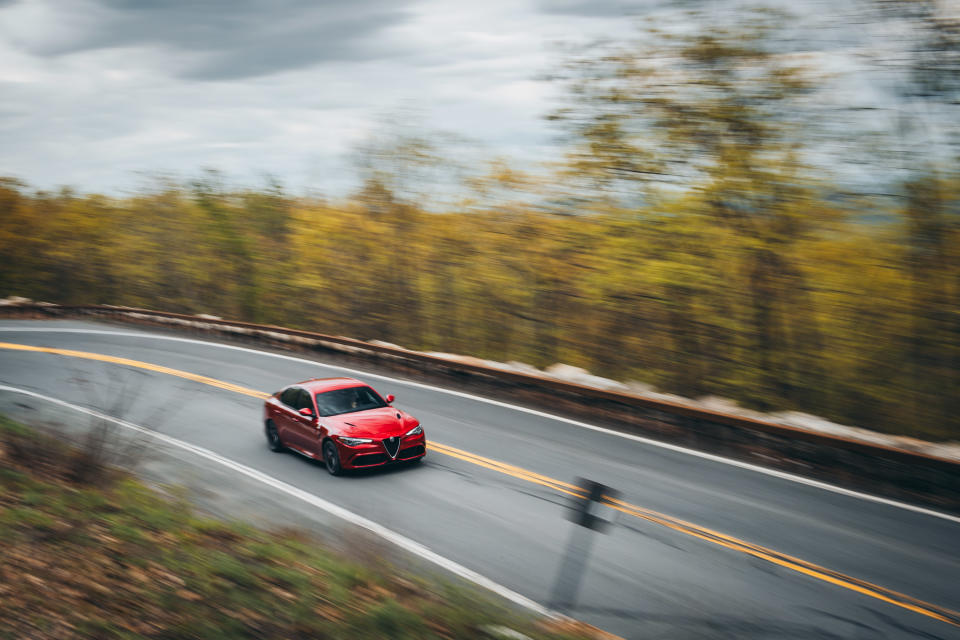Alfa Giulia Quadrifoglio: Quick Review

This car shouldn't be this good.
Alfa Romeo developed its first rear-wheel drive sports sedan in a generation, on an all-new platform, with an all-new engine in about 30 months. That might sound like a long time, but in car development terms, that's a minute. Cars like the BMW M3 take nearly twice as long from start to finish.
That meant we weren't necessarily optimistic for a car that was supposed to beat every other premium performance sedan. But there was hope. The team developing the car was a skunkworks from Ferrari, with people from the 458 Speciale team leading the charge. Even with the abbreviated engineering time, they could create something special.
They did.

Of course, our Giulia was the most stereotypical Alfa Romeo you could imagine. It was red. The cover for the headlight washer fell off before it arrived. The first time I pushed the button to adjust the seat height, my finger actually pushed the button through the seats so it dangled by a wire near the floor. The radio won't let you seek through certain stations but will let you tune to it directly, like it's keeping the 60s on 6 secret. It will also let you set the same station as a favorite multiple times, for reasons I don't understand. These are quirks and problems that wouldn't really be cool on a $20,000 car. Our test car, with options, came in at $87,000.
But driving it is a different experience. The 2.9 liter turbo V6, essentially the V8 from the Ferrari California with two cylinders lopped off, is a monster. The ZF automatic, the only gearbox in the US, feels more like a sequential racing gearbox than a traditional automatic, particularly in race mode. The carbon brakes are touchy, but once you're used to them they're as good as anything out there with hugely strong initial bite and zero fade. The chassis is stiff but impressively well damped and controlled, even on the northeast's bumpiest roads.

And then there's the best part, the part that makes it special: the steering. This is the part of the Giulia that makes it more Ferrari sedan than old-school Alfa. Let me explain.
Recent Ferraris are tuned to have an impressively direct connection with the front end of the car. There isn't even a hint of lethargy, it's almost video game quick.
The Giulia is the same way. While you can't feel a ton through the wheel itself (unfortunately the norm these days), the connection with the front end is the same as it is in a Ferrari F12. A minute input gets an equal reaction from the front end. At first, it makes the Giulia seem on edge, nervous, darty, mainly because there is no other sedan on the market that turns like this. But after 10 minutes of driving, you wonder why every other car is so lethargic on turn in.

Fitting a steering rack this quick in a fast family sedan that will be bought by the ham-fisted public is a gamble. I'm sure there are people who wanted something different than an M3, so they drove a Giulia and were spooked by the immediacy of its reactions. It makes you recalibrate how you drive and your perception of what quick steering is. This is a Ferrari feature most everyone can buy. Ok, not most. But some, some of you can buy it. More people than can buy Ferraris? I think that's fair.
Then you go back to the beginning. Not only have Alfa Romeo and a team of Ferrari engineers developed a car that is not just more engaging than a BMW M3 or Mercedes C63, but they did it all in less than three years.
And once you think about it, it's mind-boggling. It boggles the mind.
You Might Also Like

 Yahoo Autos
Yahoo Autos 